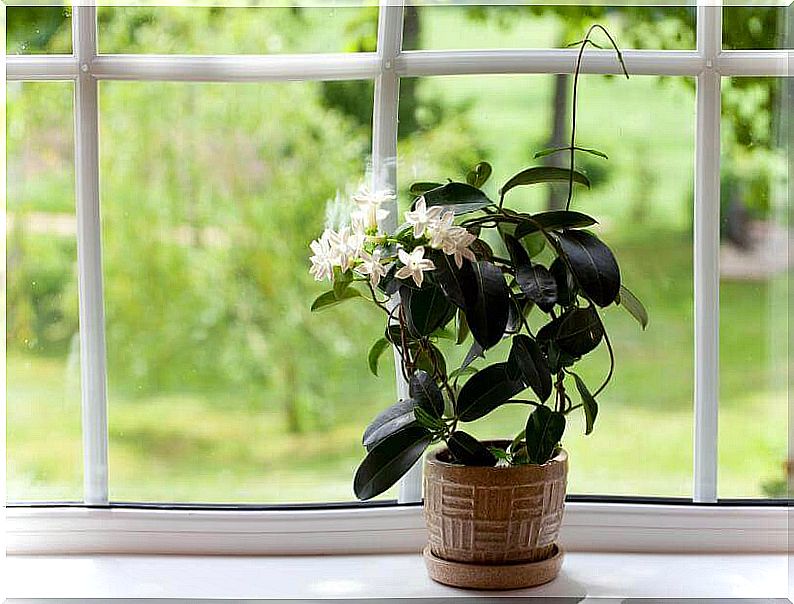Cleaning The Leaves Of House Plants
The cleaner the leaves of house plants, the better the plants can breathe and purify the air in the room.

Leaves of indoor plants not only look pretty, but can also effectively improve the indoor climate and also the quality of the indoor air. But this only works if the leaves of indoor plants are cleaned regularly.
Do you have to clean leaves from indoor plants?
Whether and how often you have to clean the leaves of houseplants depends on two key factors:
- Leaf texture and
- Surroundings
If the leaves are very hairy or waxy, cleaning is not always useful. Leaves of indoor plants that are exposed to an environment with a lot of dust or air pollution (e.g. in the office) need to be cleaned more often.
Why should one clean?
Anyone who brings a piece of nature into their home is not only good for the eyes! Of course, indoor plants are great for decorating and decorating your home, but they also improve the air! Indoor plants should be especially in offices where you spend many hours a day, because they:
- clean the air of pollutants,
- humidify the dry room air,
- save CO2 and
- produce oxygen.
The effectiveness of indoor plants against pollutants in the air was even confirmed in a study by NASA! The more plants there are in a room, the cleaner and less polluting the air there – and the healthier it is to live and work in such rooms.
The leaves of houseplants can only perform all of these tasks if you regularly remove dust and dirt from them. You have 2 options for this:
Shower
The most effective way to clean indoor plant leaves is to shower the whole plant. To do this, however, the plant must be small and light enough to be placed in the shower, bathtub, or on a balcony or terrace.
Make sure the water is at room temperature so your plant doesn’t get a cold shock.
If you want to shower off the leaves of indoor plants on the balcony or terrace, it shouldn’t be too cold outside and the sun shouldn’t shine either, because the tiny drops of water that remain on the leaves act like burning glasses and damage the plant. In addition, houseplants get sunburn easily.
Make sure to rinse the undersides of the leaves well too. After showering, let the plant drip off a little. You can support the process by gently shaking it. Also make sure that showering does not cause waterlogging, which can lead to mold, fungus and other plant diseases.
Dust off
If the plant is too big to be showered or in a flower pot that cannot be moved, all you have to do is dust the leaves by hand. Use a microfiber cloth, which cleans excellently even with low pressure. Place the leaves of houseplants on your hand to dust them and gently wipe them with the microfiber cloth.
Don’t forget to also clean the underside of the leaves, because this is where the plant breathes! You shouldn’t dust the leaves of houseplants that are hairy or have a layer of wax, but rather spray them carefully if you cannot shower them off. If you rub these leaves off, the plant would be damaged!
What can be done for leaf gloss?
Special sprays are available in stores to make the leaves of indoor plants shine like a varnish. There are also tips circulating that the leaves should be rubbed with milk or cooking oil. But first ask yourself: does it really have to be? It is definitely not good for your plant!
The leaves of houseplants are the plants’ lungs and if you coat them with spray, oil or milk residue, you prevent the plant from breathing optimally. If you absolutely want glossy indoor plant leaves for a certain occasion, please only spray the top of the leaf so that your plant can still breathe at least from the underside.
Plant control
While you are in the process of taking care of your plants, check the rest of the plant as well. About once a month is sufficient. Check that the soil looks clean. White crusts indicate either very calcareous irrigation water or too much fertilizer.
If moss, fungi or algae form on the ground or on the edge of the flower pot, this indicates that there is too much water. Either way, it’s time to repot the houseplant, removing as much old soil as possible in the process. Don’t forget to carefully clean the flower pot as well!









